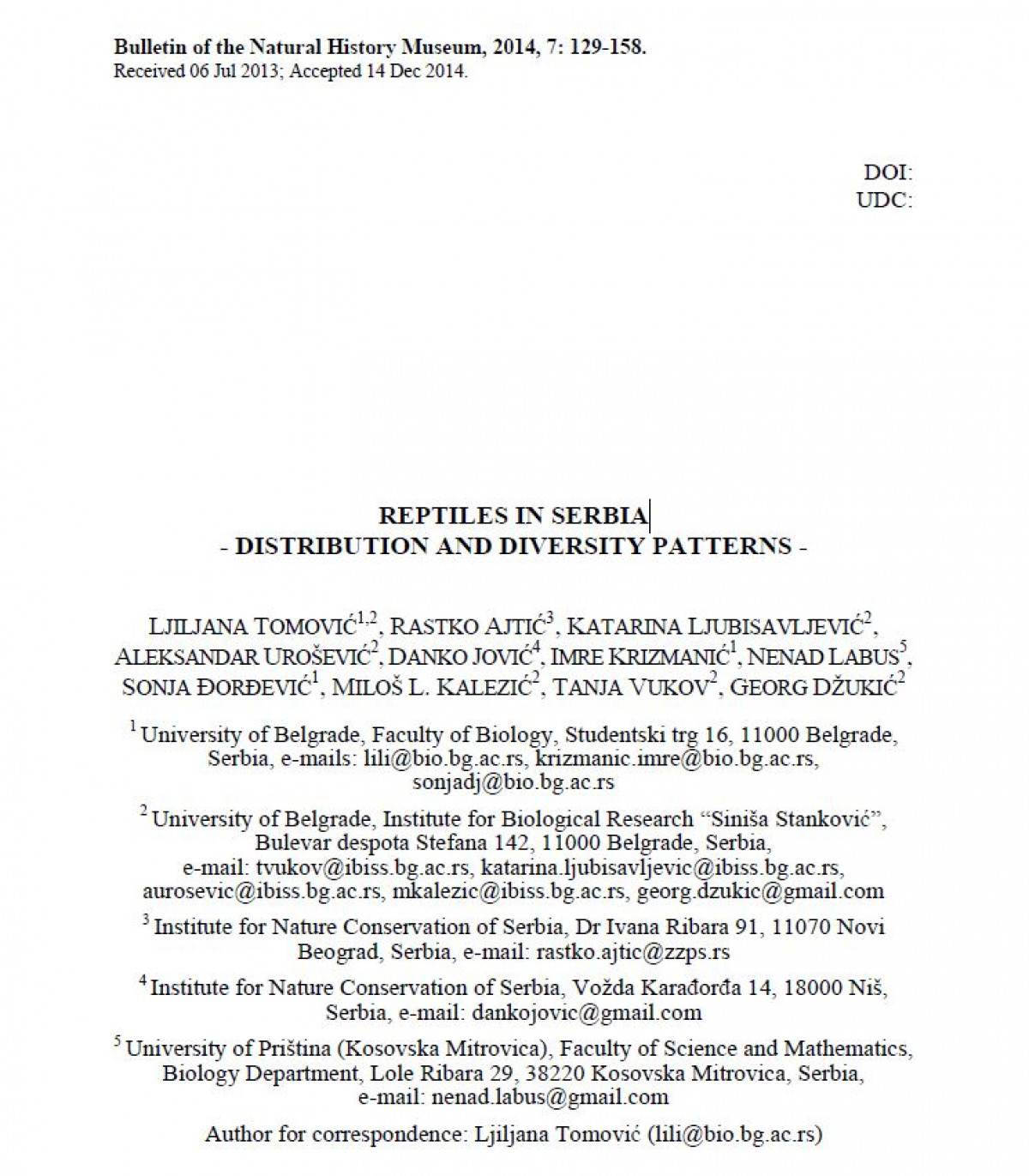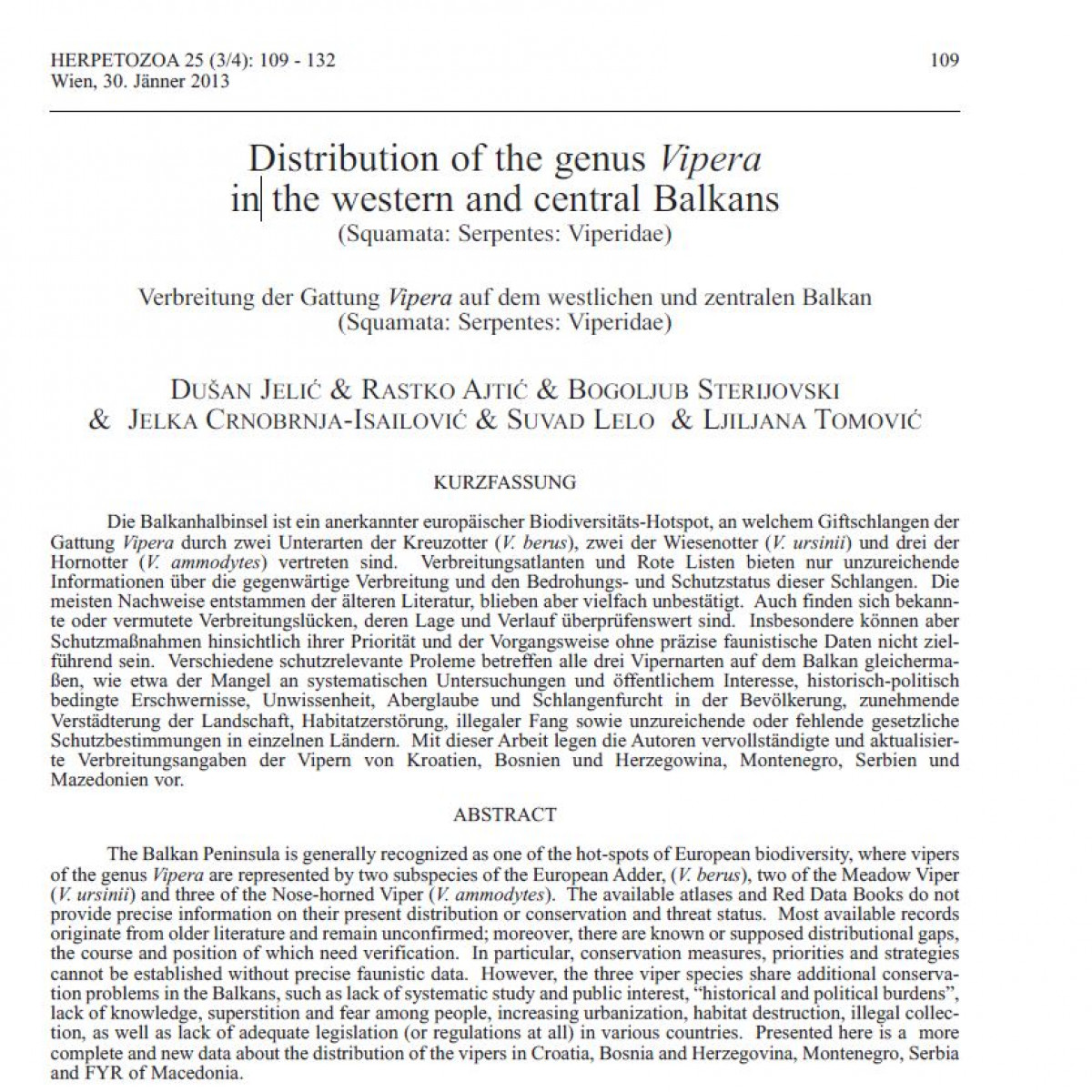Distribution of the genus Vipera in the western and central Balkans (squamata: serpentes: viperidae)
verbreitung der Gattung Vipera auf dem westlichen und zentralen Balkan (squamata: serpentes: viperidae)
wetenschappelijk artikel, PDF gratis op internet


